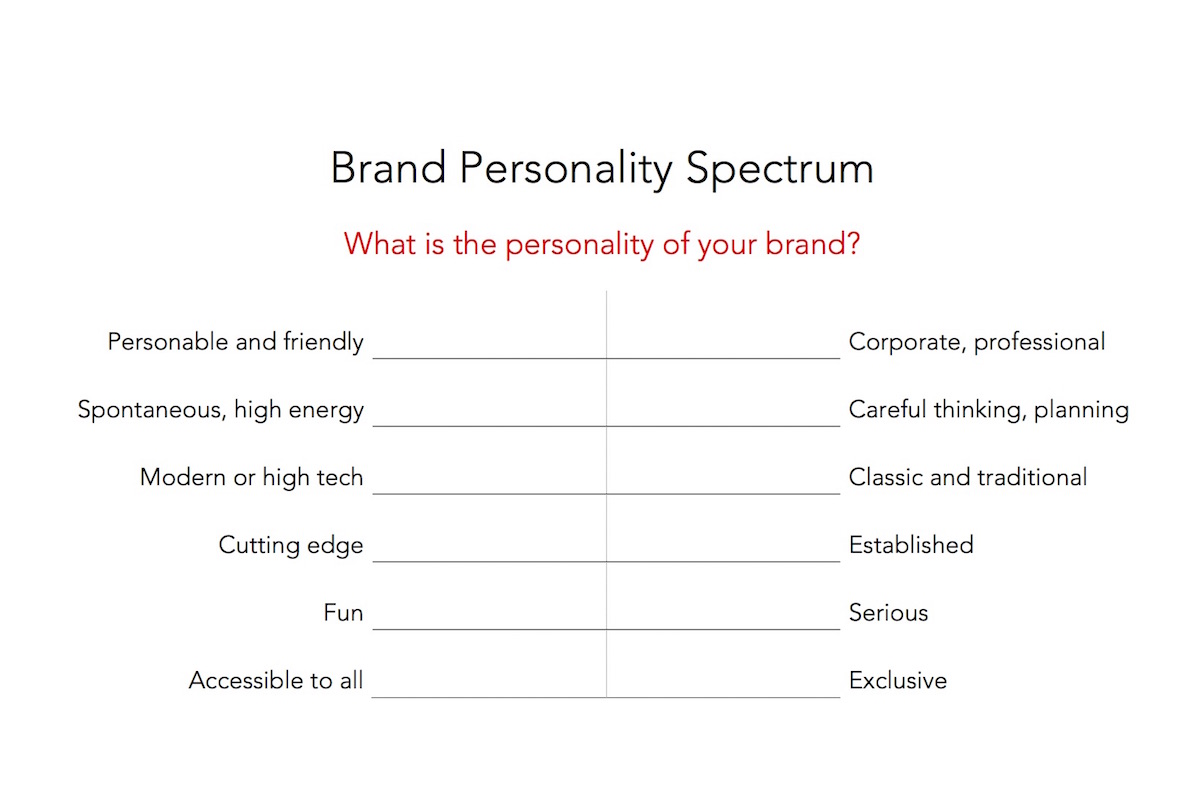Transform Your Content Marketing Program with a Brand Message Architecture
Transform your content marketing program with a brand message architecture. Learn the most important KPIs for keeping your programs on-track for success.

It’s necessary for content marketing teams to constantly evaluate where they’re at. From measuring performance KPIs to the strategic trajectory, it’s important to ensure that your programs are aligned and on-track for success.
One important aspect that may not be on your radar to assess? Your brand message architecture.
A message architecture is a prioritized set of communication goals to guide team efforts across the organization. Generally, it originates at the corporate marketing level with input from key, cross-functional stakeholders. For global content teams, it can – and should – serve as a North Star to ensure that all the content you produce supports your company’s overarching goals.
More than likely, your brand may not yet have a message architecture to evaluate. Yet, there’s never a bad time to establish a message architecture, and it’s never too late. So why not now?
Beyond content marketing, a message architecture can help teams guide decisions around everything from site structure and taxonomy to product design and partnerships. Arming your teams with a hierarchy of communication goals allows for an agile marketing approach and ensures everything you “say,” regardless of channel, conveys a unified brand message.
Why your team needs a message architecture ASAP
One system to unify workflows and marketing assets across content, social media, PR, design, and/or product teams may seem like the holy grail of efficient collaboration we’ve all been waiting for, but we can’t forget the fundamental rule of successful content marketing programs:
Marketers with a documented marketing strategy are five times more likely to succeed.
Although many marketing teams typically include some variation of voice and tone guidelines within their content marketing strategy, a message architecture takes this one step further: While voice and tone guides help us decide how to say things, a message architecture guides what we say. In particular, what we say about who our brand is and what we care about. And when it comes to crafting impactful content, knowing what your brand needs to say is the first step.
What a brand message architecture looks like
A message architecture summarizes a brand’s prioritized communication goals in a short list of attributes and phrases. This should be part of your documented content strategy to be shared among teams – which is especially useful when new members join or projects begin.
For example, Facebook might have a message architecture that looks something like this:
Considerate
Proactively transparent
Thoughtful and helpful
Friendly
Familiar, occasionally playful
Welcoming, community-oriented
Creative
Pioneering
Innovative, yet consistent
Open to user feedback
We can see these attributes in everything from Facebook’s new feature announcements to privacy update notices to error messages. Although they never say “we do this because we are considerate,” it’s evident that Facebook prioritizes that characteristic in the way it communicates with users on a daily basis.
A quick note about what a message architecture is NOT
The concept of a message architecture stems from the content strategy discipline. Author and strategist Margot Bloomstein was an early proponent of the term in her book “Content Strategy at Work,” sharing advice for building a message architecture to guide digital content initiatives like website redesigns. As Bloomstein underscored in her book, a message architecture differs from a mission statement (which is more about what we aim to achieve as a company) and a vision statement (which establishes where we are heading) because it is both actionable and specific to communication. (These are also the primary distinguishing factors between a message architecture versus a brand personality.)
A message architecture is also not a glossary for the actual words we will use in content or marketing copy. Rather, your message architecture is a reference point for cross-functional, internal teams to decide what to communicate.
Although the message architecture isn’t a glossary, the exercise of developing one will help your teams define a shared vocabulary. And that’s at least half of the magic!
How to establish a message architecture
Option 1: Card sort approach
A 45-60 minute card sort exercise is a great way to align internal stakeholders – from both within and outside of marketing – around a shared vocabulary, spurring conversation around a visual hierarchy of characteristics.
Step 1: Gather your words
You’ll want to compile a list of 50-100 adjectives to guide the conversation in your workshop.
In her book, Bloomstein shares an excellent list of words to use as a starting point. You can find the list in an excerpt of “Content Strategy at Work” online. She also sells a set of premade cards.
I typically make my own set by hand-picking the more relevant words from Bloomstein’s list, and supplementing with tailored additions for my client’s industry. I compile them in a Google spreadsheet, then write each word on its own index card.
Step 2: Invite your stakeholders
Workshops tend to go much smoother when everyone has a moment to digest the instructions beforehand, so it’s ideal to send an email to stakeholders explaining the workshop well in advance. (A note on timing: As most people tend not to consider themselves “word people,” I find that this workshop is best at the beginning of the week when minds are fresh and ambition is high.)
I also share the adjective list and Content Marketing Platform stakeholders to add their own ideas. This saves time in explaining when you get everyone together, and also makes the team feel more involved right off the bat.
Step 3: Sort your cards
Bring your stakeholders into a room (be sure to have a long table and plenty of space to move) and begin by asking the team to sort the index cards into three distinct buckets:
- Who We Are NOT
- Who We Are (Today)
- Who We Want To Be (in two years, five years, etc. depending on how agile your organization is)
Take a few minutes to review outliers or words that caused dissent at the end of this round, asking the team to discuss and articulate presumptions or bias about words. For instance, does “innovative” make one member crinkle their nose in disdain, conjuring images of aggressively sleek tech startups, while another envisions a premium, industry-leading enterprise?
After documenting the “NOT” pile (I usually snap a picture and make notes), ask the team to focus its attention on weeding out any aspects of their brand “TODAY” that they may want to shed or outgrow down the line. Document, then clear away anything that isn’t part of “Who We Want To Be.”
Step 4: Group and prioritize
Although many adjectives may appear to be similar, this is the time to dig into nuances and preferences. For instance, maybe the brand is both “approachable” and “friendly,” but really wants to lean into being proactively “friendly.”
Typically, I encourage teams to group affinities like this, stacking one directly on top of the other to show preference and priority within buckets.
Once these buckets are defined, it’s time to prioritize the buckets, themselves. For instance, one client chose to group characteristics by the following themes:
- Words that describe our product
- How our community sees us
- How our customers see us
- Who we are at our core
Depending on the organization or industry, each bucket may get prioritized higher or lower. InVision, a design software company, for example, may place the most emphasis on the product – which then influences how the community views the company.
Step 5: Find affinities and document
Now is the time to sort through notes and pictures from the workshop. Remembering that the message architecture is not a glossary, find clear and concise ways to define your “buckets.” Check out the Facebook example above for inspiration.
2. Spectrum shortcut approach
This 10-15 minute exercise is a good way to visualize and verbalize priorities. This is a quick hack of the familiar brand personality spectrum to help us establish a message hierarchy. Because there is less opportunity to find nuance in this exercise, this is good for brands that already have a good idea about who they are and where they’re going.
Step 1: Share the spectrum
Ideally, this speedy exercise can happen during a project kickoff or another in-person meeting. If so, post the “Brand Personality Spectrum” on a whiteboard or using large (8×6 inch) Post-It notes.
If you are unable to do this in person, you can email the image to stakeholders separately, including instructions from Step 2.
Step 2: Mark your priorities
Once the spectrum is up, give each stakeholder two different-colored Post-Its or sticky dots per row. (For example, each participant would receive one pink and one yellow Post-It for “Personable and friendly” vs. “Corporate, professional,” another pair of pink and yellow for the “Spontaneous…” row, and so on.)
Ask each stakeholder to place the first color (say, pink) on each row where they believe the organization’s priority is TODAY. Then, ask them to place the second color (yellow) where they believe the organization’s priority can or should evolve toward in the future. Each participant should contribute two colored markers for each row.
Take a moment to discuss here if there are obvious discrepancies or large leaps to uncover any assumptions or bias.
(If this is being done virtually, you will need to do a bit of extra legwork to follow up. A video conference call would be a great way to share findings and bring the conversation into the open.)
Step 3: Determine priority
Finally, ask each stakeholder to rank each row in terms of significance. You can do this by handing each participant a stack of Post-Its labeled 1-6, or by a color-coded tallying system on the whiteboard.
Again, this is a good opportunity to dig into the “Why” for each person, identify nuances, and find alignment.
Step 4: Document
As in the first approach, your output should look something similar to the Facebook example: concise, descriptive, and unique. (Because you won’t have a list of adjectives to get you going, you may need to be a little creative. Tap into the discussions you’ve heard to dig beyond the brand spectrum surface.)
Bringing the message architecture into your content marketing program
Once you’ve established a brand messaging architecture your organization can agree on, it’s time to socialize and fully incorporate it into your content marketing strategy. A few things you should do next:
- Make sure to document the message architecture.
- Update your content marketing strategy with the message architecture and ensure that all team members are aligned.
- Explain what it is (and is not!).
- Encourage your team to use this as a validation tool at the beginning of content planning cycles to 1. Ensure all content meets at least one stated communication goal and 2. Help prioritize scheduling or quantity of content in a certain focus area.
- Take a look at your content hub. Is the UX supportive of your message hierarchy? Use the message architecture to consider how navigation, taxonomy, and overall layout can be improved to underscore your goals.
- Share the message architecture with new team members and at the start of new projects, to maintain consistency.
When you know what your team really wants to communicate, it becomes that much easier to ensure you’re working toward the same goals – and measure success as you grow.

